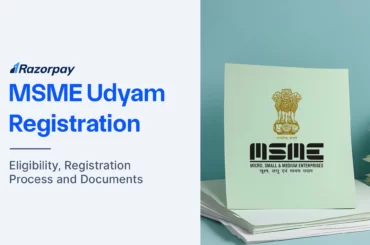Pre-money valuation refers to the value of a company excluding the latest round of funding. Simply put, pre-money valuation evaluates the worth of the startup before it steps out to receive the next round of investment. Post-money valuation, on the other hand, refers to the value of a company after it raises money and investment for itself. This includes outside financing or the latest rounds of funding.
The world of startups has a dictionary of its own and sometimes, it gets difficult to understand all of the jargon out there. Ever stumbled upon the word ‘pre & post-money valuation’ before tying your seatbelts for the rounds of funding?
Here’s a concise read on what these mean and how to calculate them.
What Is pre-money & post-money valuation?
Pre-money valuation refers to the value of a company excluding the latest round of funding. Simply put, pre-money valuation evaluates the worth of the startup before it steps out to receive the next round of investment.
Pre-money valuation does not just give investors an idea of the current value of the company but also provides the value of each issued share.
Recommended Read: Startup Funding In India: An Overview
Post-money valuation, on the other hand, refers to the value of a company after it raises money and investment for itself. This includes outside financing or the latest rounds of funding.
Since adding cash to a company’s balance sheet increases its equity value, the post-money valuation always remains on the higher side when compared to the pre-money valuation.
What is the difference between pre-money & post-money valuation?
This difference between the pre-money valuation and the post-money valuation matters because it ultimately defines the equity share that the investors will be entitled to, post the funding rounds.
For example, if an investor gives the company capital of $2,50,000, he would receive an equity share of 20%, if the pre-money valuation of the company were $1 million. This percentage jumps to 25% if the pre-money valuation of the company were set to $7,50,000. Clearly, this can have a dramatic leg; and financial implications on the company, after the funding is over.
How to calculate pre-money & post-money valuation
Calculating post-money valuation
Comparatively, it is easier to calculate the post-money valuation of the company. Here’s how you can find this:
Post-money valuation= Investment Dollar Amount / Percent Investor Receives
So if an investment is worth $3 million nets an investor at 10%, the post-money valuation will be $30 million.
$3 million / 10% = $30 million
Please note, this does not mean that the company is valued at $30 million. Wondering why? The balance sheet of the company shows an increase of just $3 million (in cash), hence increasing the company’s value by the same amount.
Also Read: All You Need To Know About Balance Sheets
Calculating pre-money valuation
Remember that the pre-money valuation of a company is the company’s valuation before any funding comes into the picture. But this is important since it gives investors a picture of what the company is valued in the present day. Calculating the pre-money valuation is not difficult but it just requires one extra step: calculating the post-money valuation. Here’s how you can find this:
Pre-money valuation= Post-money Valuation – Investment Amount
Let’s use the example mentioned above to understand this better. Here, the pre-money valuation will be $27 million. It is because we subtract the investment amount from the post-money valuation amount.
Pro-tip: Knowing the pre-money valuation of a company makes it easier to determine its per-share value. Here’s how you can find it:
Per-share value=Pre money valuation / Total Number Of Outstanding Shares
Key Takeaways
- Pre-money & post-money valuation differ in timing of valuation
- Pre-money valuation refers to the value of the company excluding the latest round of funding
- Post-money valuation includes external funding
The concept of pre-money & the post-money valuation can be a confusing one at first for many startup founders. There are also cases where founders opt to ignore these valuation processes and simply place a pre-money valuation based on self assumption and their company’s performance. Basically, they end up using this as a shortcut and give up on the entire procedure in exchange for the quick investment they need.
The drawback that this approach gets is that you offer an unrealistic valuation and your potential investor thinks you are unprepared.
Remember that investors also consider other factors like your target markets, competitors performance, scalability and many other factors relating to your company.
Hence a detailed report on pre & post-money valuation plays a major role when you step out with your company!
Hope this guide helps you get started if you haven’t already!
Also Read Non-Disclosure Agreement: Meaning, Importance & Benefits





